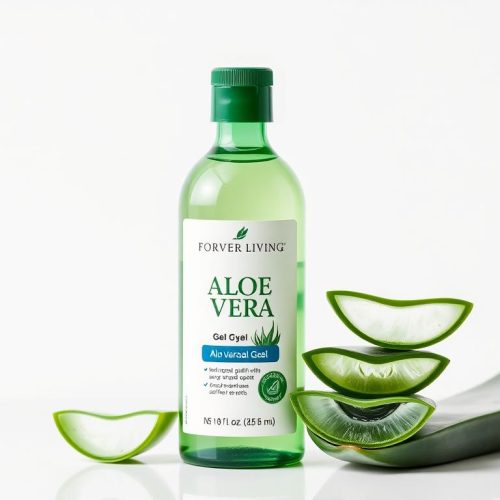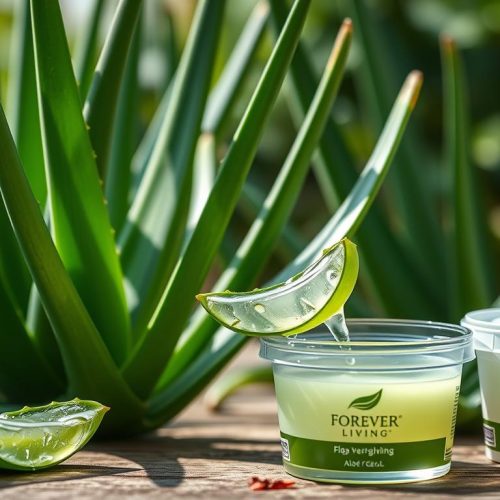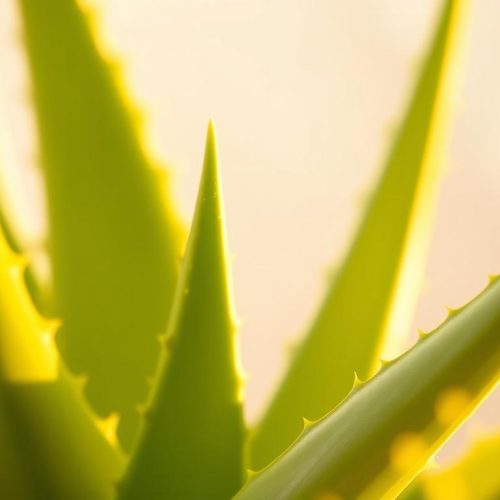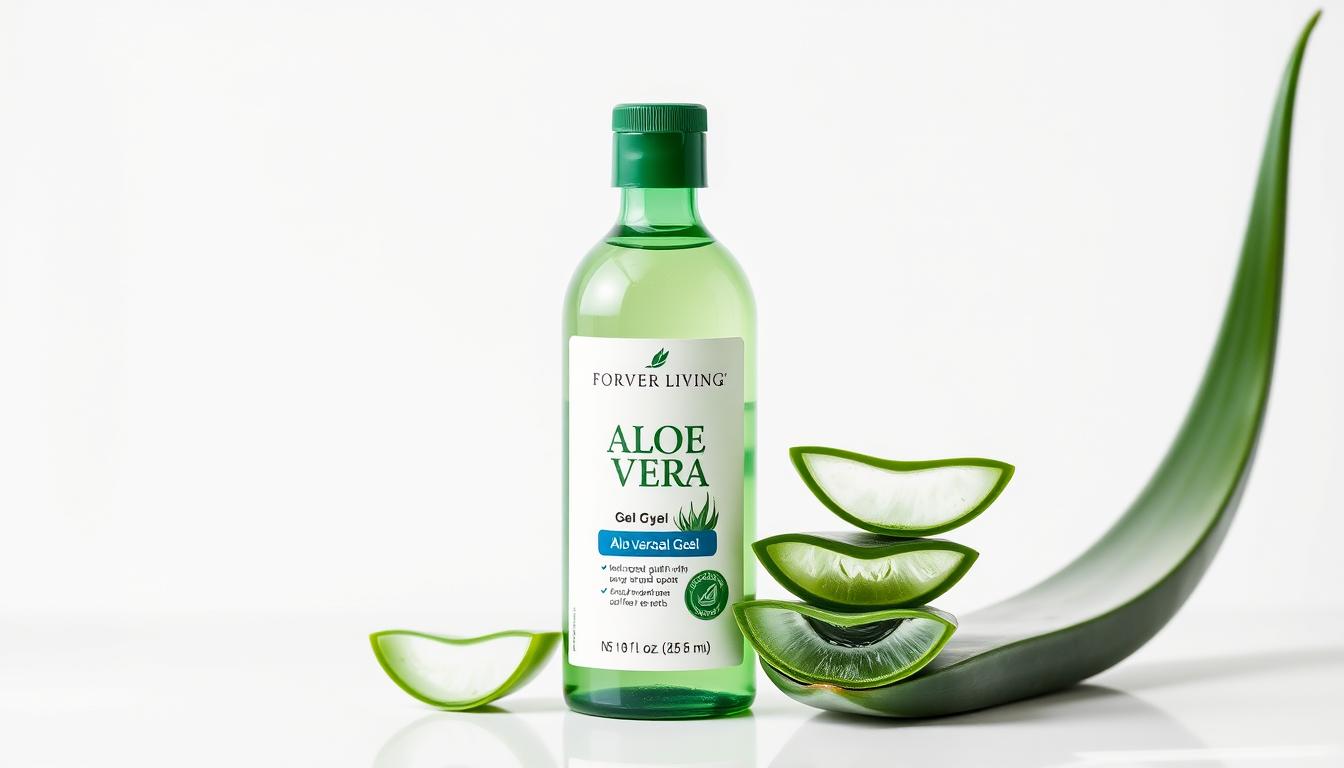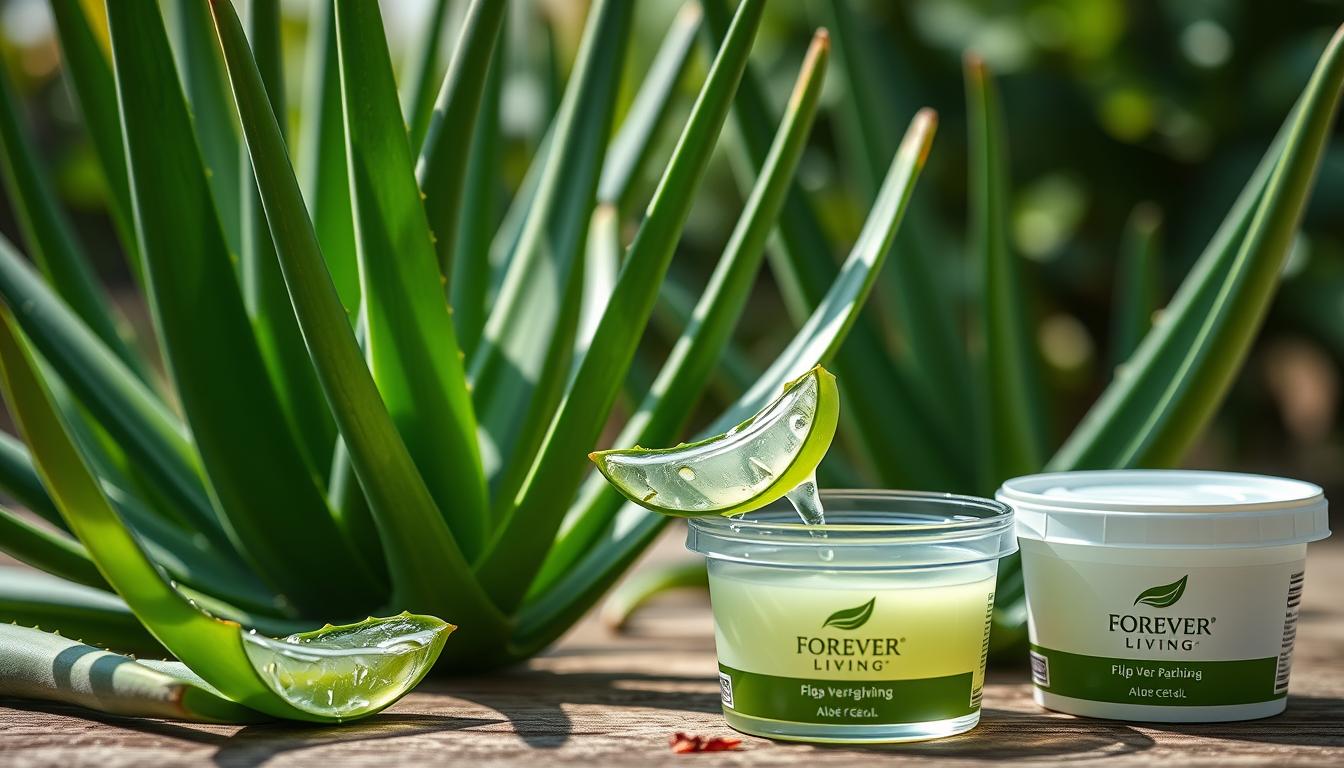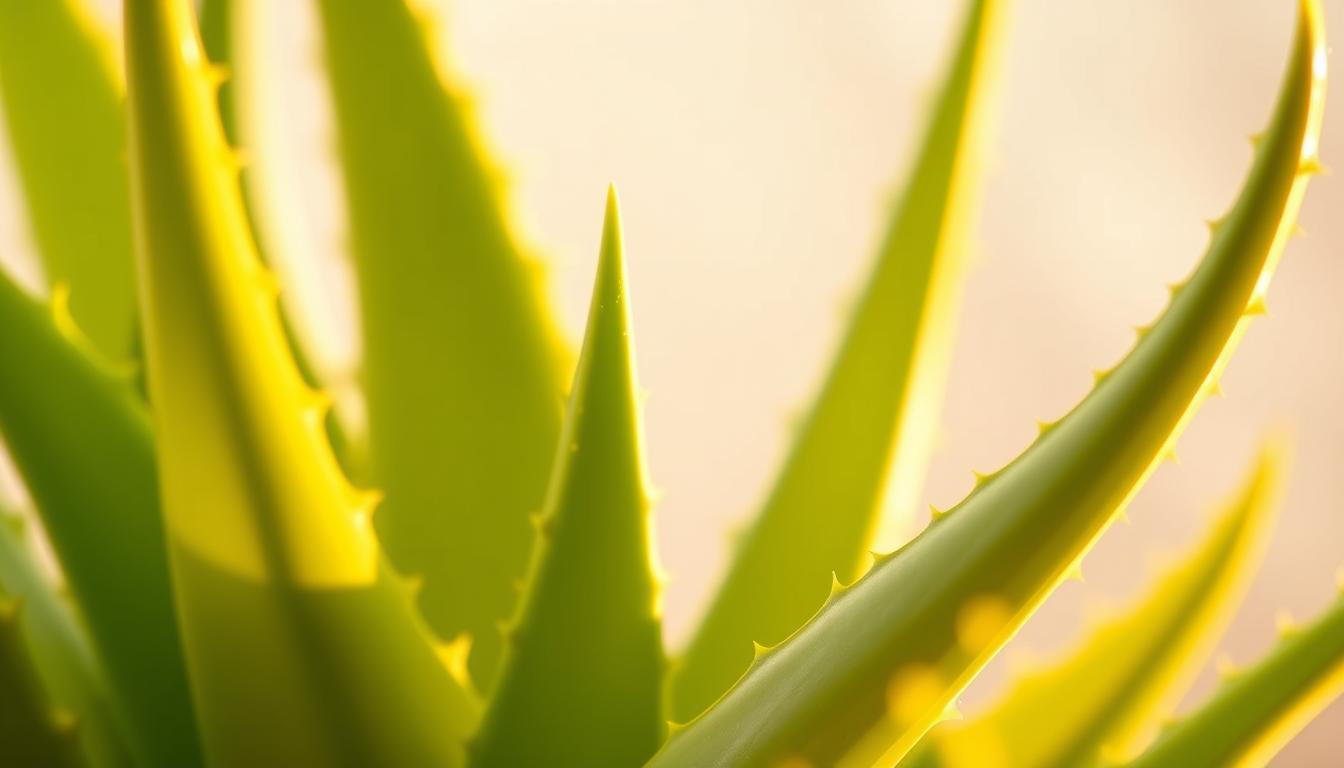Aloe vera has been a prized possession for centuries, with its origins tracing back to the Arabian Peninsula. The ancient Egyptians, in particular, revered it for its medicinal and beauty benefits, using it in their beauty rituals to enchant empires.
Today, aloe vera is a $1.3 billion industry, powering everything from TikTok-viral face masks to astronaut-approved burn treatments. But how did this spiky desert plant outlive civilizations, trends, and even scientific skepticism?
- The Ancient Origins of Aloe Vera
- Aloe Vera in Ancient Egypt: Cleopatra's Beauty Secret
- Aloe Vera in Ancient Medicine: Beyond Beauty
- The Spread of Aloe Vera Across Civilizations
- The Timeless Appeal of Aloe Vera: Why It Has Endured
- How to Harvest and Prepare Fresh Aloe Vera
- How to Create Cleopatra-Inspired Aloe Vera Beauty Treatments
- Modern Skincare Applications: Following Ancient Wisdom
- Aloe Vera in Modern Medicine: Scientific Validation
- How to Incorporate Aloe Vera into Your Daily Wellness Routine
- Growing Your Own Aloe Vera: A Connection to Ancient Practices
- Conclusion: The Enduring Legacy of Nature's Healer
- FAQ
- What is the history of aloe vera?
- How did Cleopatra use aloe vera?
- What are the benefits of using aloe vera for skincare?
- Can aloe vera be used internally?
- How do I harvest and prepare fresh aloe vera?
- Can I grow my own aloe vera?
- What are some modern applications of aloe vera?
- Is aloe vera scientifically validated?
- The Ancient Origins of Aloe Vera
- Aloe Vera in Ancient Egypt: Cleopatra's Beauty Secret
- Aloe Vera in Ancient Medicine: Beyond Beauty
- The Spread of Aloe Vera Across Civilizations
- The Timeless Appeal of Aloe Vera: Why It Has Endured
- How to Harvest and Prepare Fresh Aloe Vera
- How to Create Cleopatra-Inspired Aloe Vera Beauty Treatments
- Modern Skincare Applications: Following Ancient Wisdom
- Aloe Vera in Modern Medicine: Scientific Validation
- How to Incorporate Aloe Vera into Your Daily Wellness Routine
- Growing Your Own Aloe Vera: A Connection to Ancient Practices
- Conclusion: The Enduring Legacy of Nature's Healer
- FAQ
- What is the history of aloe vera?
- How did Cleopatra use aloe vera?
- What are the benefits of using aloe vera for skincare?
- Can aloe vera be used internally?
- How do I harvest and prepare fresh aloe vera?
- Can I grow my own aloe vera?
- What are some modern applications of aloe vera?
- Is aloe vera scientifically validated?
Key Takeaways
- Aloe vera has been used for centuries for its medicinal and beauty benefits.
- The ancient Egyptians highly valued aloe vera, using it in their beauty rituals.
- Today, aloe vera is a multi-billion dollar industry with various applications.
- Aloe vera has been used to treat various skin conditions and promote overall well-being.
- The timeless appeal of aloe vera lies in its versatility and effectiveness.
The Ancient Origins of Aloe Vera
The story of aloe vera begins in the ancient world, where it was first documented in Egyptian papyrus records. Aloe vera’s rich history is a testament to its enduring benefits and versatility.
The First Documented Uses of Aloe Vera
Aloe vera’s earliest recorded uses date back to ancient Egypt, where it was valued for its medicinal and cosmetic properties. The Ebers Papyrus, an Egyptian medical text, contains numerous references to aloe vera’s uses.
Egyptian Papyrus Records of Aloe Vera
The Ebers Papyrus, written around 1550 BCE, is one of the oldest known medical texts. It documents various uses of aloe vera, including its application in treating skin conditions and promoting overall health.
Aloe Vera in Early Civilizations
Aloe vera was not only used in ancient Egypt but also in other early civilizations, such as Mesopotamia and the Mediterranean. Its widespread use across these cultures highlights its universal benefits.
Mesopotamian and Mediterranean Uses
In Mesopotamia and the Mediterranean, aloe vera was used for its medicinal properties, including treating wounds and skin irritations. The plant’s versatility and effectiveness made it a staple in traditional practices.
- Aloe vera was used in ancient Egypt for its medicinal and cosmetic properties.
- The Ebers Papyrus documents various uses of aloe vera.
- Aloe vera was used in Mesopotamia and the Mediterranean for its medicinal properties.
By examining the ancient origins of aloe vera, we can gain a deeper understanding of its timeless appeal and the reasons behind its continued use across cultures.
Aloe Vera in Ancient Egypt: Cleopatra's Beauty Secret
Cleopatra, the last pharaoh of Ancient Egypt, was known to incorporate aloe vera into her beauty routine. The ancient Egyptians prized aloe vera for its hydrating and soothing properties, making it an essential component of their beauty regimens.
How Cleopatra Incorporated Aloe Vera into Her Beauty Regimen
Cleopatra’s beauty routine was multifaceted, with aloe vera playing a central role. She used aloe vera to maintain the health and appearance of her skin.
Daily Skin Treatments of Egyptian Royalty
The daily skin treatments of Egyptian royalty involved the use of aloe vera to moisturize and protect the skin. Aloe vera’s anti-inflammatory properties helped to soothe and calm the skin, reducing the appearance of fine lines and wrinkles.
Royal Egyptian Beauty Treatments Using Aloe Vera
Aloe vera was a staple in royal Egyptian beauty treatments, used in various forms to promote skin health. The Egyptians believed that aloe vera had rejuvenating properties, making it an ideal ingredient for their beauty rituals.
Recreating Cleopatra's Facial Masks
Cleopatra’s facial masks were renowned for their effectiveness, with aloe vera being a key ingredient. To recreate these masks, one can mix aloe vera gel with other natural ingredients like honey and olive oil. The resulting mask can be applied to the face, left on for 15-20 minutes, and then rinsed off with warm water, leaving the skin feeling soft and refreshed.
Aloe Vera in Ancient Medicine: Beyond Beauty
Aloe vera’s medicinal properties have been revered for centuries, with ancient civilizations leveraging its benefits beyond mere beauty treatments. The plant’s versatility and wide range of healing properties made it a staple in the medical practices of ancient cultures.
Medicinal Applications in Ancient Greece and Rome
In ancient Greece and Rome, aloe vera was utilized for its medicinal properties, treating various ailments from skin conditions to internal disorders. The Greek physician Dioscorides documented its benefits, highlighting its use in soothing wounds and treating digestive issues.
Dioscorides' Documentation of Aloe Vera Benefits
Dioscorides’ work, “De Materia Medica,” is one of the earliest recorded texts to detail aloe vera’s medicinal applications, showcasing its use in treating a variety of health issues.
Traditional Chinese Medicine and Aloe Vera
Aloe vera was also incorporated into Traditional Chinese Medicine (TCM), where it was valued for its balancing properties. Practitioners used aloe vera to treat conditions related to imbalances in the body’s qi.
Balancing Properties in Eastern Medical Traditions
In TCM, aloe vera is believed to have a cooling effect on the body, helping to balance the body’s internal environment. This traditional understanding of aloe vera’s properties continues to influence its use in modern medicine.
| Civilization | Medicinal Use |
|---|---|
| Ancient Greece & Rome | Treatment of skin conditions and internal disorders |
| Traditional Chinese Medicine | Balancing body’s qi and treating internal imbalances |
The Spread of Aloe Vera Across Civilizations
Aloe vera’s journey across the ancient world was facilitated by the establishment of extensive trade networks. As a highly valued plant, it was disseminated across different cultures, becoming an integral part of their traditional practices.
Aloe Vera Along the Silk Road
The Silk Road, a major trade route, played a significant role in the spread of aloe vera across various civilizations. Merchants and traders transported the plant along this route, introducing it to new regions and cultures.
How Trade Routes Popularized the Plant
The exchange of goods and ideas along the Silk Road facilitated the adoption of aloe vera in different cultures. As the plant was introduced to new regions, its medicinal and cosmetic properties were discovered and utilized by local populations.
Introduction to Western Cultures
Aloe vera was introduced to Western cultures through trade and cultural exchange. As the plant became more widely available, its uses and benefits became more well-known, leading to its incorporation into Western traditional practices.
European Adoption of Aloe Vera Practices
European cultures adopted aloe vera practices, incorporating the plant into their traditional medicine and beauty treatments. The versatility of aloe vera made it a valuable addition to their practices, contributing to its enduring legacy.
The spread of aloe vera across civilizations is a testament to its timeless appeal and the significance of its benefits. As different cultures adopted and utilized the plant, its value and importance were reinforced, contributing to its continued use and appreciation today.
The Timeless Appeal of Aloe Vera: Why It Has Endured
From ancient civilizations to modern times, aloe vera has remained a cherished plant, valued for its universal benefits and versatility. Its enduring popularity can be attributed to the numerous uses that have been recognized across cultures and historical periods.
Universal Benefits Recognized Across Cultures
Aloe vera has been utilized in various ways, from medicinal applications to beauty treatments. Its soothing properties have made it a staple in traditional medicine, while its cosmetic benefits have been exploited in beauty regimens.
Common Uses Found in Different Historical Periods
- Ancient Egyptians used aloe vera for its medicinal and cosmetic properties, incorporating it into their beauty treatments and rituals.
- In ancient Greece and Rome, aloe vera was valued for its healing properties, used to treat various ailments.
- Traditional Chinese medicine also employed aloe vera, leveraging its benefits for overall wellness.
The Versatility That Transcends Time
The versatility of aloe vera is evident in its continued use across different cultures and historical periods. Its benefits are multifaceted, ranging from skin care to medicinal applications.
How Ancient Applications Mirror Modern Uses
The modern uses of aloe vera mirror its ancient applications, with contemporary research validating its traditional uses. Today, aloe vera is used in a variety of products, from skincare creams to medicinal preparations, underscoring its timeless appeal and the enduring value it offers.
In conclusion, the timeless appeal of aloe vera lies in its universal benefits, versatility, and the multitude of uses that have been recognized across cultures and historical periods. As we continue to discover new applications for this ancient plant, its enduring popularity is a testament to its lasting value.
How to Harvest and Prepare Fresh Aloe Vera
To unlock the benefits of aloe vera, it’s essential to know how to harvest and prepare it correctly. Aloe vera has been used for centuries for its medicinal and cosmetic properties, and its modern uses continue to evolve. From skincare to haircare, aloe vera remains a versatile and natural remedy.
Step-by-Step Guide to Cutting and Extracting Aloe Gel
Harvesting aloe vera involves a few simple steps. First, select a mature aloe vera leaf from the plant. The leaf should be thick and firm, indicating that it is ready for harvesting. Using a sharp knife, cut the leaf from the plant at the base. Care should be taken to avoid damaging the plant or the leaf.
Tools and Techniques for Clean Extraction
To extract the aloe gel, slice the leaf open and scoop out the gel with a spoon. It’s crucial to avoid mixing the gel with the yellow latex underneath, as this can cause skin irritation. Using the right tools, such as a clean spoon and a sharp knife, is essential for clean extraction.
Proper Storage Techniques for Maximum Potency
Once the aloe gel is extracted, it needs to be stored properly to maintain its potency. The gel can be stored in an airtight container in the refrigerator for up to a week. Proper storage is key to preserving the gel’s medicinal properties.
Preserving Aloe Gel Without Additives
For longer storage, the aloe gel can be frozen. Simply scoop the gel into an ice cube tray and freeze. The frozen gel cubes can be stored in a freezer-safe bag for several months. This method allows you to preserve the aloe gel without adding any preservatives or additives, maintaining its natural benefits.
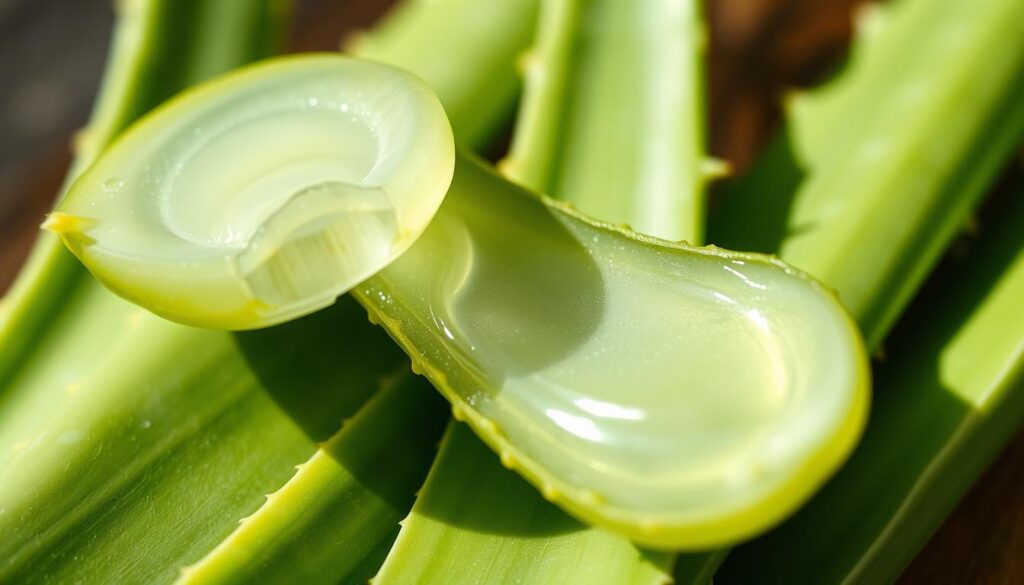
How to Create Cleopatra-Inspired Aloe Vera Beauty Treatments
Aloe vera was a staple in Cleopatra’s beauty regimen, and its benefits can still be enjoyed today. The ancient Egyptian queen’s beauty secrets have been a topic of fascination for centuries, and modern beauty enthusiasts can draw inspiration from her use of aloe vera.
Ancient Egyptian Face Mask Recipe
Cleopatra’s beauty routine included face masks made from natural ingredients, and aloe vera was a key component. To create a Cleopatra-inspired face mask, you will need:
Ingredients and Application Methods
- 2 tablespoons of aloe vera gel
- 1 tablespoon of honey
- 1 teaspoon of olive oil
- 1 teaspoon of finely ground almonds
Mix these ingredients together to form a paste, and apply it to your face. Leave the mask on for 15-20 minutes before rinsing with warm water. This mask will help to nourish and moisturize your skin, leaving it feeling soft and supple.
Aloe Vera Hair Treatment Fit for Royalty
In addition to its skin benefits, aloe vera can also be used to create a nourishing hair treatment. To make a Cleopatra-inspired hair mask, you will need:
Step-by-Step Hair Mask Preparation
- Mix 1/4 cup of aloe vera gel with 2 tablespoons of coconut oil and 1 tablespoon of honey.
- Apply the mixture to your hair, from roots to ends.
- Leave the mask on for 30 minutes before rinsing with warm water.
- Shampoo and condition your hair as usual.
This hair mask will help to moisturize and condition your hair, leaving it feeling soft and manageable.
By incorporating these Cleopatra-inspired aloe vera beauty treatments into your routine, you can experience the timeless benefits of this ancient ingredient.
Modern Skincare Applications: Following Ancient Wisdom
Following in the footsteps of ancient civilizations, modern skincare now incorporates aloe vera in various treatments, leveraging its soothing, hydrating, and anti-aging properties. The timeless appeal of aloe vera lies in its versatility and effectiveness, making it a staple in contemporary skincare routines.
Treating Sunburns and Skin Irritations
Aloe vera is widely used to treat sunburns and skin irritations due to its anti-inflammatory and soothing properties. It helps to reduce redness, promote healing, and provide relief from discomfort.
Application Techniques for Optimal Relief
For optimal relief, aloe vera gel can be applied topically to the affected area. It is recommended to gently massage the gel into the skin until it is fully absorbed. Reapplication can be done as needed, ideally after cleansing the skin.
Anti-Aging Properties and Applications
Aloe vera is also valued for its anti-aging properties, including its ability to hydrate the skin, reduce the appearance of fine lines and wrinkles, and improve skin elasticity.
Creating Anti-Aging Serums with Aloe
To create an anti-aging serum, aloe vera gel can be combined with other natural ingredients such as vitamin E oil and essential oils. The resulting serum can be applied to the face and neck, helping to nourish and rejuvenate the skin.
| Skincare Benefit | Aloe Vera’s Role |
|---|---|
| Soothing sunburns | Anti-inflammatory properties |
| Hydrating the skin | Rich in vitamins and minerals |
| Anti-aging | Improves skin elasticity and reduces fine lines |
Aloe Vera in Modern Medicine: Scientific Validation
Modern research has reaffirmed the traditional uses of aloe vera, paving the way for new medical applications. The scientific validation of aloe vera’s benefits is a testament to its enduring legacy as a natural healer.
Research Supporting Traditional Uses
Numerous studies have been conducted to validate the traditional uses of aloe vera. These studies have shown that aloe vera is effective in treating various health conditions, including skin irritations and wounds.
Key Studies on Aloe Vera Efficacy
Several key studies have demonstrated the efficacy of aloe vera in different medical applications. For instance, a study published in the Journal of Ethnopharmacology found that aloe vera gel accelerated wound healing in rats by promoting collagen synthesis and improving tissue strength.
Another study published in the Journal of Dermatological Treatment found that aloe vera gel was effective in reducing the severity of psoriasis symptoms in patients.
| Study | Findings |
|---|---|
| Journal of Ethnopharmacology | Aloe vera gel accelerated wound healing in rats. |
| Journal of Dermatological Treatment | Aloe vera gel reduced psoriasis symptoms in patients. |
New Medical Applications Being Discovered
Ongoing research is exploring new medical applications for aloe vera, including its potential anti-inflammatory and antimicrobial properties.
Innovative Uses in Contemporary Healthcare
Aloe vera is being investigated for its potential use in treating various modern health concerns, such as inflammatory bowel disease and antibiotic-resistant infections. Its anti-inflammatory properties make it a promising candidate for treating conditions characterized by inflammation.
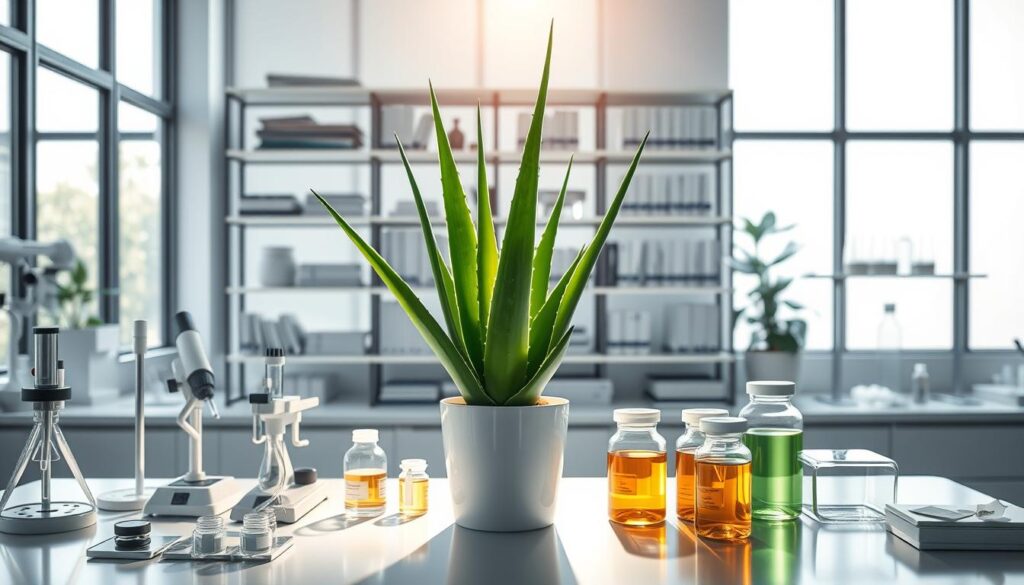
The versatility of aloe vera and its potential applications in modern medicine underscore its significance as a natural resource with a rich history.
How to Incorporate Aloe Vera into Your Daily Wellness Routine
To reap the rewards of aloe vera, it’s essential to understand how to incorporate it into your daily wellness routine. Aloe vera is a versatile plant that offers numerous health benefits when consumed or applied topically.
Internal Uses and Consumption Guidelines
Aloe vera can be consumed internally to support digestive health and boost the immune system. When consumed, aloe vera juice can help soothe digestive issues and promote overall well-being.
Safe Preparation of Aloe for Consumption
To consume aloe vera safely, it’s crucial to choose a high-quality, organic aloe vera juice that is free from additives and preservatives. Always follow the recommended dosage on the label, and consult with a healthcare professional if you have any underlying health conditions.
External Applications for Overall Health
Aloe vera can also be applied topically to promote skin and hair health. Its anti-inflammatory properties make it an effective treatment for sunburns, skin irritations, and minor wounds.
Daily Skin and Hair Care Routines
Incorporating aloe vera into your daily skin and hair care routines can have a significant impact on your overall health. Use aloe vera gel as a moisturizer, or add it to your hair care routine to promote healthy hair growth and reduce dandruff.
By incorporating aloe vera into your daily wellness routine, you can experience the timeless appeal of aloe vera and enjoy its numerous health benefits. Whether consumed internally or applied topically, aloe vera is a natural and effective way to promote overall well-being.
Growing Your Own Aloe Vera: A Connection to Ancient Practices
By cultivating aloe vera, you’re not just growing a plant, you’re continuing a timeless legacy. Aloe vera has been a cornerstone of wellness practices across various cultures, from ancient Egypt to modern times. Growing your own aloe vera connects you to this rich history while providing a readily available source of this versatile plant.
Cultivation Tips for Different Climates
Aloe vera is a hardy plant that can thrive in various climates, but it does require specific conditions to grow well. In dry climates, aloe vera needs protection from intense sunlight and adequate watering. In more temperate climates, aloe vera can be grown outdoors with proper care.
Soil, Light, and Water Requirements
Aloe vera prefers well-draining soil, bright indirect light, and moderate watering. Overwatering is a common mistake that can lead to root rot. Ensuring the soil dries out between waterings is crucial for the health of the plant.
Sustainable Harvesting Practices
Sustainable harvesting is key to maintaining the health of your aloe vera plant. Removing too many leaves at once can stress the plant, reducing its ability to regenerate.
Ensuring Plant Health After Leaf Removal
After removing leaves, make sure to leave enough for the plant to continue photosynthesizing. A general rule is to not remove more than one-third of the leaves at any given time. This allows the plant to recover and continue thriving.
Conclusion: The Enduring Legacy of Nature's Healer
Aloe vera’s rich history and numerous benefits underscore its timeless appeal as a natural healer. From ancient civilizations to modern times, this versatile plant has been revered for its medicinal, cosmetic, and spiritual properties.
The history of aloe vera is a testament to its enduring legacy, with its uses and applications evolving over time yet remaining rooted in traditional practices. As we continue to discover new uses for aloe vera, its significance in modern wellness routines is undeniable.
By understanding and appreciating the timeless appeal of aloe vera, we can harness its potential to promote overall health and well-being. Whether used in skincare, medicine, or spiritual practices, aloe vera remains a valuable resource, connecting us to a rich cultural heritage that spans thousands of years.
FAQ
What is the history of aloe vera?
Aloe vera has a rich history that spans thousands of years, with its first documented uses dating back to ancient civilizations in Egypt, Greece, and China. It was highly valued for its medicinal, cosmetic, and spiritual properties.
How did Cleopatra use aloe vera?
Cleopatra, the ancient Egyptian queen, was known to have used aloe vera as part of her beauty regimen. She incorporated aloe vera into her daily beauty routine, using it to moisturize and soothe her skin.
What are the benefits of using aloe vera for skincare?
Aloe vera has been used for centuries to soothe and moisturize the skin, reducing inflammation and promoting healthy skin cell growth. Its anti-aging properties and ability to treat sunburns and skin irritations make it a timeless and versatile skincare solution.
Can aloe vera be used internally?
Yes, aloe vera can be consumed internally, and it has been used to support digestive health and boost the immune system. However, it’s essential to follow proper guidelines and consult with a healthcare professional before consuming aloe vera internally.
How do I harvest and prepare fresh aloe vera?
To harvest and prepare fresh aloe vera, simply cut off a leaf from the plant, slice it open, and scoop out the gel. Store the gel in an airtight container in the refrigerator to preserve its potency.
Can I grow my own aloe vera?
Yes, aloe vera is a relatively easy plant to grow, and it can thrive in a variety of climates. To grow aloe vera, choose a well-draining soil, provide adequate sunlight, and water sparingly.
What are some modern applications of aloe vera?
Aloe vera is used in a wide range of modern applications, including skincare products, hair care treatments, and dietary supplements. Its versatility and benefits have made it a popular ingredient in the health and wellness industry.
Is aloe vera scientifically validated?
Yes, research has validated many of the traditional uses of aloe vera, and new medical applications are being discovered. Studies have shown that aloe vera has anti-inflammatory, antioxidant, and antimicrobial properties, making it a valuable natural remedy.


